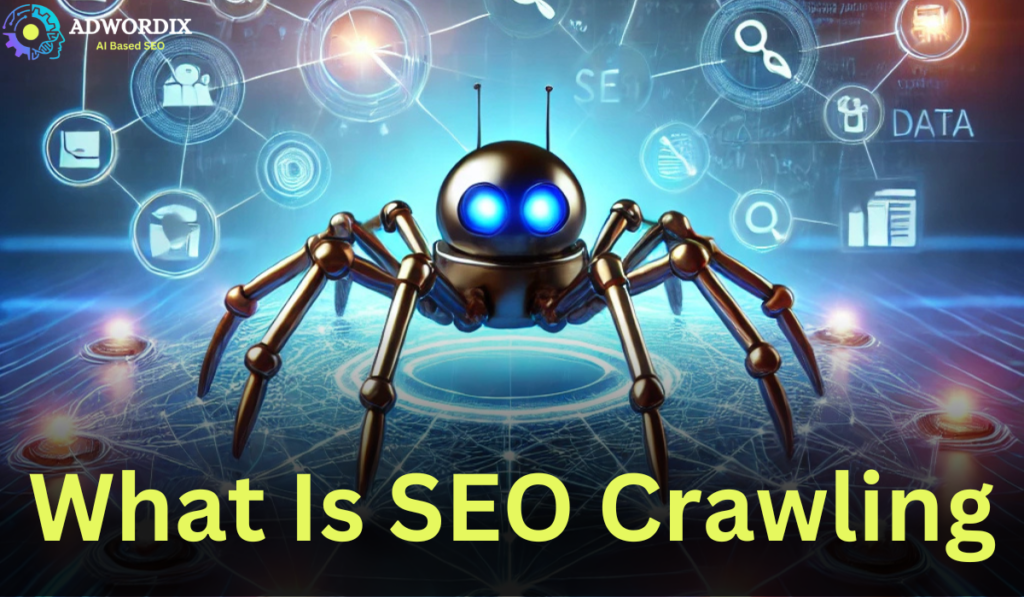SEO locates, retrieves, and gathers information about any new or modified web pages. Such a coordinated effort enables search engines to create an extensive database of the World Wide Web, which is then used to provide users with relevant information. Therefore, it is imperative that SEO crawling is understood in order to ensure effective optimization of a particular website and maintain a decent ranking on SERPs.
This manual focuses on the subtleties of SEO crawling, its significance, and suggestions to aid in web crawling. This will include a definition of types of SEO crawling, indexing and ranking, problems associated with obstacles to effective crawling, and so on. Further on, you will get to know how to deal with crawl mistakes, make the most out of your crawl budget, and what efficient when it comes to developing and organizing a website expansion. In the last part of this guide, you should not doubt how it is SEO crawling and what is there to help your site reach higher positions in search engines and the world of the Internet as a whole.
What is SEO crawling?
SEO crawling is a basic activity of all web search engines that facilitates the retrieval, navigation, and indexing of the multitude of web pages that exist on the Internet. This is fundamental in creating and maintaining an active and current index from which search engines draw to return appropriate results. As such, it is understandable why website owners would want to learn how to perform SEO crawling out of the many tiers that SEO presents.
When the crawlers fetch these first pages, they read the contents and survey the links contained in every page. From these links, crawlers start finding new pages. Being a recursive process, with the crawler visiting new pages, it continues by finding links to them and then to new ones. Therefore, the developers have created an algorithm that helps in developing a system to crawl the web effectively.
Major steps of a crawling process:
- Fetching Pages: It starts with a known list of URLs from which the crawler fetches initial pages. These can be the URLs submitted by webmasters or pages that were fetched previously.
- Reading Content: Once they have fetched a page, the crawler reads and analyzes the content. It will include the parsing of HTML, extraction of text, and identification of critical elements such as headings, meta tags, and images.
- Following Links The crawler scans the links on every page. They may be internal links that jump to other pages within the same site or may be external links that lead to another website completely. The crawler adds all of the discovered links to its list of URLs to visit next.
- Storing Data: The data obtained from each page are stored within an immense index database. The index is designed so that the search engine can access relevant pages extremely effectively when a user submits a search query.
How Search Engines Crawl Websites
The deployment of crawlers is a systematic process designed to cover as much of the web as possible. Here’s a closer look at how search engines use these crawlers:
- Launchpad: Most of the time, a list of seed URLs is provided to crawlers for onward search. Seed URLs may come in the form of sitemaps submitted by webmasters, web pages that have been indexed, and other reliable sources as categorized by the search engines themselves.
- Outreach and Learning: Each time the crawler reaches a certain URL, the same algorithm scans the given content and all the hyperlinks directing to other pages searching for new URLs. This allows all corners of the World Wide Web to be visited.
- Parsing and Cataloging Information: Once a spider visits a webpage, the very first step is to scan all the pages available on it. This means analyzing the page’s source code for useful components: the title, headers, text, pictures and auxiliary information. A spider also scans the code for other elements like the exclusion instructions and can use robots.txt. file or meta robot tags embedded in the header of the page.
- Evaluation of Links: Crawlers check the pages for available links to find other pages that can be crawled. Internal links help the crawler understand the hierarchical and navigational structure of the website by providing access to other pages within the same website. External links, or outgoing links, direct the crawler to a site structure and help it understand how everything is interconnected and how all sites meet.
- Indexing And Storage Of Information: The crawl information is kept in the index of the Search Engine. This index is a huge amount of data that is created for each and every page that the item has already visited. This contains other things such as what the page is addressing, its URL, the meta tag of the page, and how the pages are related to one another using links.
- Terms of Crawl Length and Bearing: This means that search engines also decide on the minimum period between the crawls of the same website – its crawl frequency – and the maximum number of pages on such website that the crawler will potentially visit – the crawl depth.
- Controlling Crawling Issues: Crawlers face various issues that undermine crawling. They suffer crawl errors 404 (not found) and 500 (server errors), in which they are denied permission to access certain pages. The crawlers also obey the directives of the robots.txt file that can deny them access to particular pages or sections of a website.
- Purpose of SEO Crawling: Since crawling directly relates to the appearance of the web pages of your site on the search engines’ ranking, the pages of your site ought to have been crawled and indexed sufficiently for the site to receive search results traffic in a more than probable likelihood.
Some of the main advantages of effective crawling for SEO include the following:
- Indexing optimization: Crawling efficiently means that the correct web pages of your website are discovered and indexed by the search engine. They will thus turn up in the search results.
- Better ranking: A page that is easy to crawl and well-structured is ranked better in the search results. This is so because the enhanced relevance and quality of these pages can be evaluated.
- Increased Visibility: A search engine is less likely to maintain the freshness of a search index through frequent and broad crawling; hence, the newest contents are made available to the users searching for related topics.
- Error detection: Crawling helps to identify broken links and duplicated content, thus offering a website owner the chance to solve these problems and improve performance.
This, of course, enhances the likelihood of having an indexed and highly ranked website in search results, thereby allowing for more organic traffic to your site. Understanding SEO crawling and optimizing your website for it will make your site jump out of the pack of visibility and ranking in the digital environment.
SEO crawling its types
Deep crawling
Deep crawling also identified as full site crawling takes an in-depth look at every single page in the website. A crawling of this sort is normally less trayed however it underscores indexing the whole site in all its magnitude. This comprehensive deep crawl coverage of the deep crawling process is very useful especially when capturing the array of content and structure of the website.
Shallow crawling
Shallow crawling is the opposite. Instead of going into deep areas of a website, it concentrates more on the upper area of a website, for example, its main page along with some other internal pages. This type of crawling is carried out more often and helps to keep the most important sections of a site contained within the search engine’s index.
Fresh crawling
Fresh crawling, also known as recrawling, is the process of returning to indexed pages later in time to determine if there have been updates. Fresh crawling is favored for those sites that have new content being posted or existing content being modified on a habitual basis out of the necessity of the site’s index being up to date.
How Crawling Is Used by Search Engines
Once a crawler finds and then parses a page, information contained therein is encoded and stored in a database of a search engine. Step indexing, as it is known, is very important because it helps the search engine to provide and pinpoint relevant results in a split second when a user requests information. The data indexed is also used in the ordering of the pages considering several issues like their relevance and quality and how they follow the recommended practice of SEO.
Crawl Frequency and Crawl Depth Indices
While crawl frequency is the metric that refers to how often an engine’s crawler visits a particular site, crawl depth is the metric that measures how many levels the crawler goes into the site’s structure; these two metrics are based on the update frequency, authority and importance of the crawlable website. Crawlers also tend to be more extreme and frequent with well-established also frequently updated websites.
Preparing Your Site for SEO Crawling
How to Improve Crawlability
A Clear Sitemap A well-structured sitemap helps crawlers understand the structured orientation of your website and crawl all relevant pages.
- Use Robots.txt Wisely: You can use the robots.txt file to guide the crawlers on which pages to crawl and which pages to ignore. This means not having them waste your crawl budget on unnecessary, unimportant pages.
- Ensure Proper Linking: Internal links should be logical and help crawlers navigate your site properly.
- Optimize the URL Structure: Clean descriptive URLs are easier to read by crawlers and hence easier to index.
- Improve the Site Speed: The faster the site loads, the more efficient the crawl and, ultimately, the user experience.
Guidelines for Web Structure and Webdesign
- Responsiveness in design: Ensure your website has a responsive design so search engines like mobile-first indexing.
- Use of Headings and Subheadings: Proper use of HTML tags (H1, H2, etc.) enables the crawlers to understand the hierarchy and relevance of content.
- Freshness and Relevance of Content: Maintaining fresh and relevant content attracts crawling and serves for better indexing.
Common Problems with SEO Crawling
- Error 404: A page is not found. This leads to 404 errors. Fix by setting correct redirections.
- 500 Errors: This error shows that there’s something wrong with your server. The answer to this would be the reliability of the server and its settings.
- Blocked Resources: Allow resources such as JavaScript and CSS including others to be accessed by them which means that they should not be blocked using robots.txt.
Crawl Budget and How to Optimize It
It is defined as the number of pages a search engine crawled within a certain period, “crawl budget.” To make the most of your crawl budget:
- Focus on High-Value Pages: Make the best content available in a click or two.
- Minimize Unwanted Pages: Discourage the crawling of poor-quality pages, that contain replicated or low content.
- Track Crawling: Employ Google Search Console and other tools to monitor your site’s crawling frequency and depth.
Conclusion
Crawling is among the most important processes of Search Engine Optimization. The performance of performance is directly related to the elements of the site concerning the crawling indexing and ranking of the content within the site. The information that involves how to crawl the system how many types of crawling are there and website optimization can do miracles in enhancing the performance of the search engines on a website. Seeking the best results possible is the other reason why hiring an SEO agency in Gurgaon or using professional SEO services can be overly helpful in improving the ranking and visibility of your site.
Frequently Asked Questions
SEO crawling means searching for newly added or altered web pages via Popular search engines. Crawlers navigate to any website, ingest its Content and explore, following the links, to get page more content. This mechanism is imperative since it helps search engines include your site into their database which makes it possible to show results for searched queries. Such websites that are crawlable, quite often tend to feature in the higher order ranking in the search engines.
Now turning to web crawling, deep crawling goes on to look at every single stand-alone page on a given site without fail for maximisation of the indexation of that site capturing maximum content for the search engine’s use. On the other hand, shallow crawling only focuses on fundamental pages which is by far the best for websites that are often updated and have a lot of content. Also known as new content crawling or fresh content crawls, fresh crawling refers to the process of revisiting certain indexed pages to determine if any new changes need updating and integrating into the old indexed information. The individual crawling techniques are particularly effective for optimizing a website’s search engine exposure and resolving any relevant content update issues.
Firstly, make sure you have a well-scrutiny sitemap where one can easily find all the pages of your website to the crawler of any search engine. Then, use a file called robots.txt that will guide crawlers on the pages to give priority to or exclude from crawling. Internal linking should be logical to help in both the ease of users in finding content around your site and the ease of crawlers in navigating through it. Optimize your URL structures by cleaning up and making the URLs easily understandable to crawlers. Speed up your site so that it can crawl faster, thus improving the overall experience of users. It will be mobile-friendly; this means you cater to mobile users and make it more crawlable. This constant update of content keeps it fresh and interesting to crawlers, thus supporting constant indexing and presence in the search engine.
Crawl Errors will prevent crawlers from accessing pages. The most common errors are 404, which is a “not found,” and 500, a “server error.” Their cure is done through the activation of the redirects or correcting the server problems.
Blocked Resources: Such essential resources as JavaScript and CSS should not be blocked by the robots.txt file.
The crawl budget refers to how many pages a search engine visits on your website within a specific period. Some ways to optimize your crawl budget are as follows:
- Focus on high-quality content: Make sure your best content is accessible.
- Reduce low-value pages: Limit the index of thin content or duplicates.
- Monitor crawl activity: Use tools such as Google Search Console to track crawling activity.





